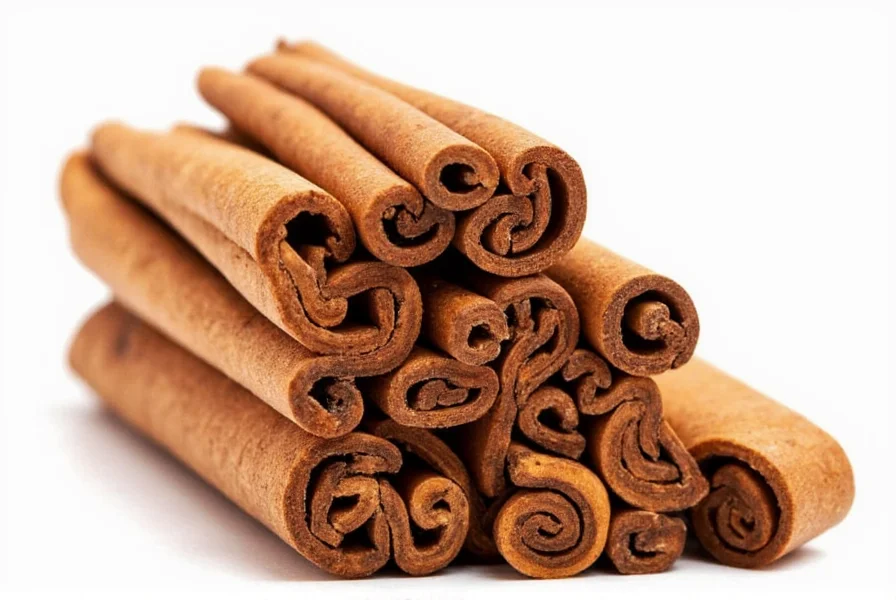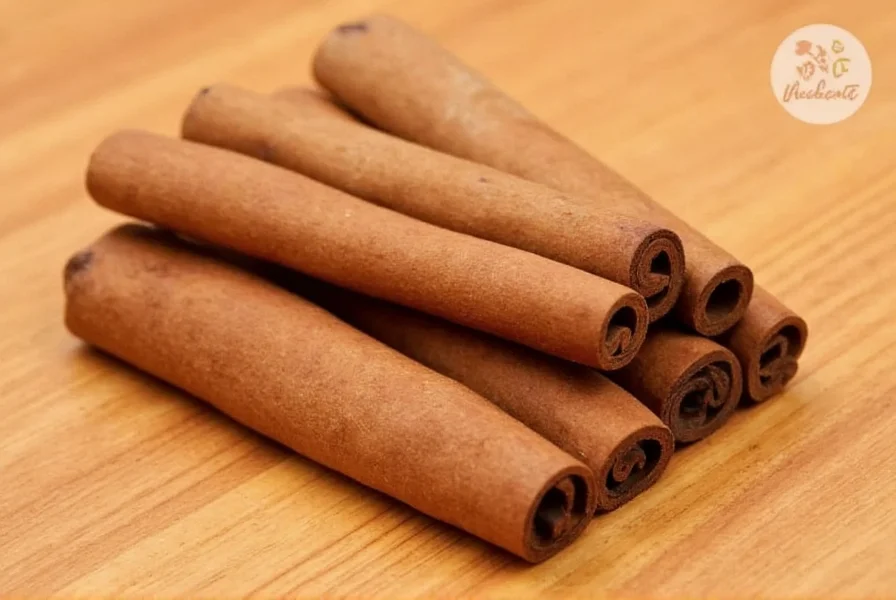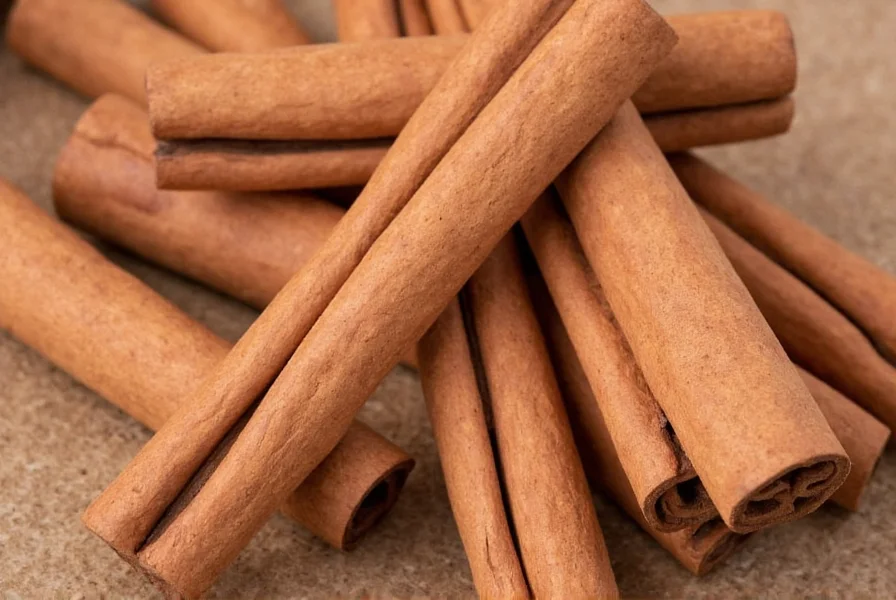When exploring the world of spices, Ceylon cinnamon sticks stand out as the premium variety with distinctive characteristics that differentiate them from the more common Cassia cinnamon found in most supermarkets. Understanding these differences is essential for both culinary excellence and health-conscious consumption.
What Makes Ceylon Cinnamon Sticks Unique
Ceylon cinnamon sticks represent the inner bark of the Cinnamomum verum tree, primarily cultivated in Sri Lanka and parts of southern India. The harvesting process involves carefully removing the outer bark and scraping the inner bark, which naturally curls into delicate quills as it dries. This meticulous method results in the characteristic thin, multi-layered sticks that distinguish Ceylon cinnamon from its Cassia counterpart.
Unlike Cassia cinnamon, which typically forms a single thick layer, authentic Ceylon cinnamon sticks have a distinctive “cigar-like” appearance with multiple paper-thin layers that can often be easily crushed between your fingers. This structural difference is one of the most reliable visual indicators when identifying genuine Ceylon cinnamon sticks versus other varieties.

Physical Characteristics of Authentic Ceylon Cinnamon
Ceylon cinnamon sticks possess several distinctive physical properties that help differentiate them from other cinnamon varieties:
- Color: Light tan to light brown (vs. dark reddish-brown of Cassia)
- Texture: Brittle and easily broken or ground (Cassia is hard and difficult to break)
- Layers: Multiple thin layers forming a delicate, hollow tube (Cassia has a single thick layer)
- Thickness: Approximately 1-2 mm (Cassia is 3-5 mm thick)
- Aroma: Subtle, sweet fragrance with citrus notes (Cassia has a stronger, more pungent aroma)
Ceylon vs. Cassia Cinnamon: Key Differences
| Characteristic | Ceylon Cinnamon | Cassia Cinnamon |
|---|---|---|
| Scientific Name | Cinnamomum verum | Cinnamomum cassia |
| Origin | Sri Lanka, India | China, Indonesia, Vietnam |
| Appearance | Multiple thin layers, light brown | Single thick layer, dark reddish-brown |
| Coumarin Content | Very low (0.017g/kg) | High (1-5g/kg) |
| Taste Profile | Mild, sweet, citrus notes | Strong, spicy, more intense |
| Price Comparison | Higher (3-10x more expensive) | Lower (more widely available) |
Health Considerations of Ceylon Cinnamon Sticks
One of the most significant advantages of Ceylon cinnamon sticks is their substantially lower coumarin content compared to Cassia cinnamon. Coumarin, a natural compound found in higher concentrations in Cassia, can potentially cause liver damage when consumed in large quantities over time.
For individuals who regularly consume cinnamon for potential health benefits or culinary purposes, choosing Ceylon cinnamon sticks provides a safer option. While both varieties contain beneficial compounds like cinnamaldehyde and polyphenols, the safety profile of Ceylon makes it preferable for daily use.
Research suggests cinnamon may offer potential benefits for blood sugar regulation, antioxidant activity, and anti-inflammatory effects. However, most studies use concentrated extracts rather than culinary amounts, and cinnamon should not be considered a replacement for medical treatment.

Culinary Applications for Ceylon Cinnamon Sticks
Ceylon cinnamon sticks offer versatile applications in both sweet and savory cooking due to their delicate flavor profile. Their subtle taste makes them particularly suitable for dishes where you want a gentle cinnamon presence rather than an overpowering spice.
Beverages: Add a stick to hot tea, coffee, or mulled wine for gentle flavor infusion. Ceylon cinnamon works exceptionally well in chai recipes and hot chocolate, providing warmth without overwhelming other flavors.
Baking and Desserts: While ground cinnamon is more common in baking, you can simmer Ceylon sticks in liquid ingredients (like milk for rice pudding or custards) and then remove them before baking. This extracts the flavor without adding cinnamon particles to your final product.
Savory Dishes: Ceylon cinnamon sticks complement Middle Eastern and Indian cuisines beautifully. Add one to rice pilafs, curries, or braised meat dishes for subtle complexity. They work especially well with lamb, chicken, and vegetable stews, enhancing rather than dominating the flavor profile.
Infused Sugars and Syrups: Place a stick in a container of sugar for several weeks to create cinnamon sugar, or simmer in simple syrup for flavored sweetener used in cocktails or desserts.
Proper Identification and Storage
With the market flooded with Cassia cinnamon often mislabeled as “Ceylon,” here's how to verify authenticity and maintain quality:
Identification Tips:
- Examine the structure: True Ceylon consists of multiple thin layers forming a delicate, hollow tube
- Check the color: Ceylon is light tan to light brown, while Cassia is darker reddish-brown
- Test the texture: Ceylon sticks are brittle and can be easily broken between fingers
- Smell the aroma: Ceylon has a more subtle, sweeter fragrance with citrus notes
Storage Recommendations:
- Store in an airtight container away from light and heat
- Keep in a cool, dark cupboard (not next to cooking areas)
- Properly stored, they maintain good flavor for 1-2 years
- Check freshness by rubbing and smelling - fresh sticks have a strong, sweet aroma
Why Choose Whole Ceylon Cinnamon Sticks Over Powder
While ground cinnamon offers convenience, Ceylon cinnamon sticks provide several advantages for discerning cooks:
- Fresher flavor retention: Whole sticks preserve essential oils and flavor compounds longer than pre-ground powder
- Lower oxidation: The interior remains protected from air exposure
- Versatile usage: Can be used whole for infusion or freshly ground as needed
- Easier identification: Much simpler to distinguish Ceylon from Cassia in stick form
- Extended shelf life: Properly stored sticks maintain quality for 1-2 years versus 6-12 months for powder
For the freshest flavor in your recipes, consider grinding your own cinnamon sticks as needed using a dedicated spice grinder or mortar and pestle. One cinnamon stick typically equals 1/2 to 1 teaspoon of ground cinnamon, though you may need to adjust based on the subtle flavor profile of Ceylon compared to Cassia.
Frequently Asked Questions
What's the main difference between Ceylon and Cassia cinnamon sticks?
The primary difference lies in their physical structure and coumarin content. Ceylon cinnamon sticks consist of multiple thin, delicate layers forming a hollow tube and contain very low levels of coumarin (0.017g/kg). Cassia cinnamon forms a single thick layer and contains significantly higher coumarin levels (1-5g/kg), which can be harmful with regular consumption.
Why is Ceylon cinnamon more expensive than regular cinnamon?
Ceylon cinnamon commands a higher price due to its limited growing regions (primarily Sri Lanka), more labor-intensive harvesting process, lower yield per tree, and higher demand for its superior quality and safety profile. The careful extraction of the delicate inner bark requires skilled labor, contributing to the higher cost compared to Cassia cinnamon.
How can I verify if my cinnamon sticks are authentic Ceylon cinnamon?
Authentic Ceylon cinnamon sticks display multiple thin layers forming a delicate, hollow tube, are light tan to light brown in color, brittle enough to break easily with your fingers, and have a subtle sweet aroma with citrus notes. Cassia cinnamon typically has a single thick layer, is darker reddish-brown, very hard to break, and has a stronger, more pungent scent.
Are Ceylon cinnamon sticks better for regular consumption than Cassia?
Yes, Ceylon cinnamon sticks are generally considered safer for regular consumption due to their significantly lower coumarin content. While both types contain beneficial compounds, Cassia's high coumarin levels can potentially cause liver issues with frequent, large consumption. For daily culinary use, Ceylon is the safer choice, though neither should be considered a medical treatment.
How should I use Ceylon cinnamon sticks in cooking compared to powder?
Ceylon cinnamon sticks work best when simmered in liquids to infuse flavor (like in teas, stews, or rice dishes), then removed before serving. For baking, you can grind sticks as needed for fresher flavor. One cinnamon stick typically equals 1/2 to 1 teaspoon of ground cinnamon, but adjust to taste as Ceylon has a more subtle flavor than Cassia powder.











 浙公网安备
33010002000092号
浙公网安备
33010002000092号 浙B2-20120091-4
浙B2-20120091-4